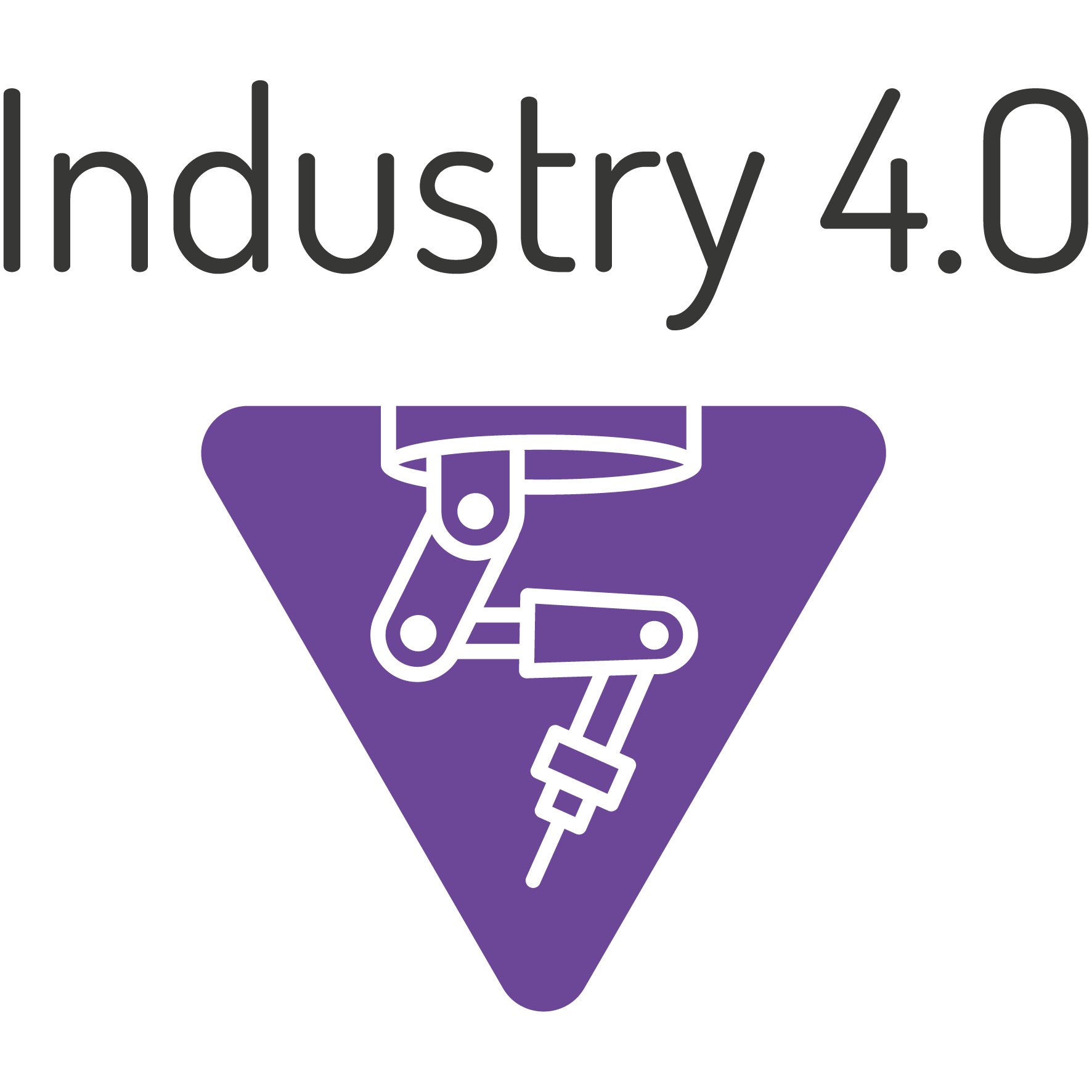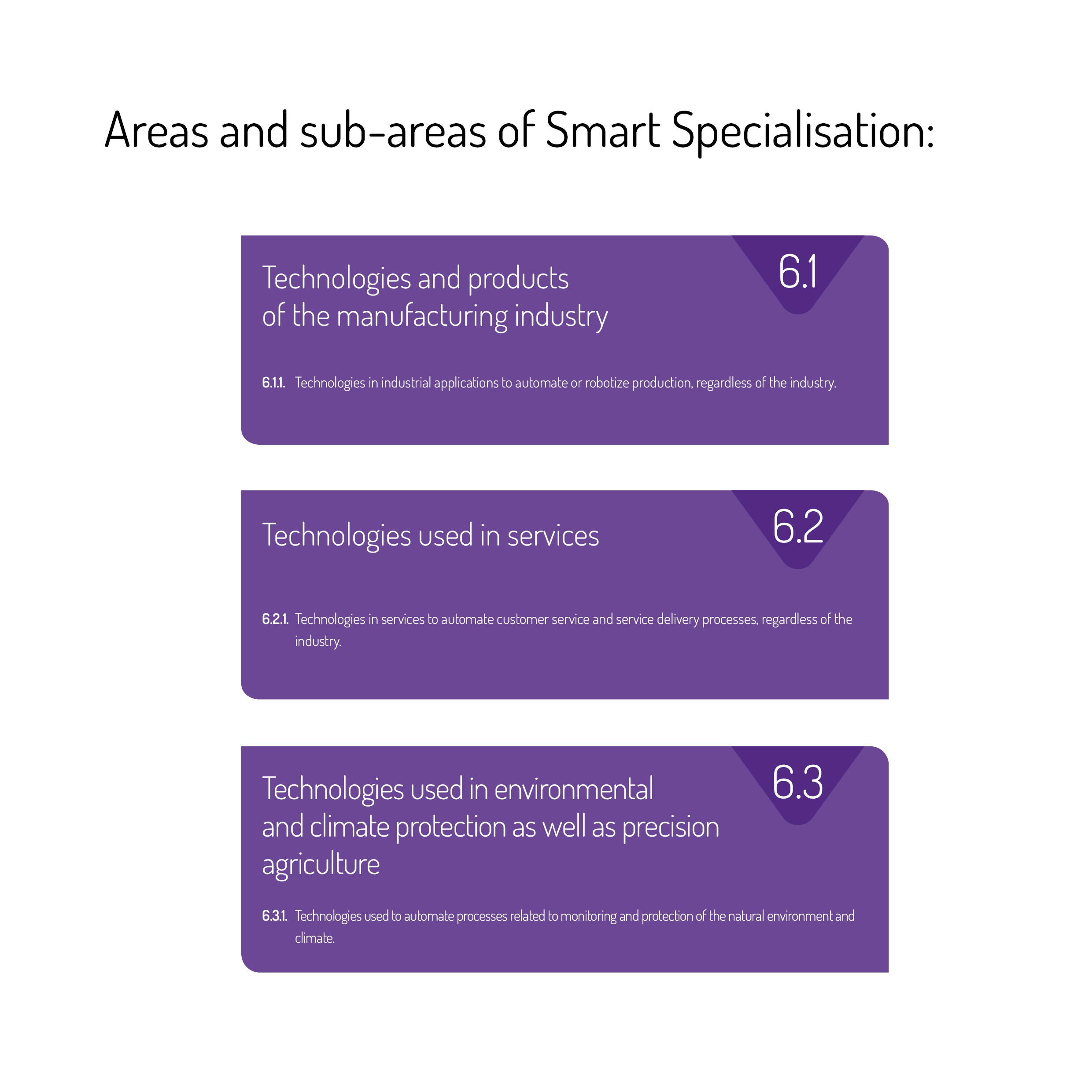
‘Industry 4.0’ - a horizontal specialisation encompassing the application of mechatronic, information and communication, and photonic and optoelectronic technologies (e.g. based on laser, LED, infrared generation and detection techniques, advanced spectroscopy, laser sensorics, optical communication, optical satellite communication) in such areas of business as:
- Automation or robotisation of production;
- Automation of customer service and service delivery processes;
- Automation of ancillary processes (e.g. through processing of large data sets, use of 3D printing in rapid design processes, etc.);
- Environmental and climate monitoring and protection and precision agriculture.
As studies conducted in Poland on the productivity of the country's economy show, growth opportunities based solely on organisational solutions and replacement of basic production equipment are running out. Without far-reaching computerisation and automation (without, of course, neglecting such technological areas as mechatronics or optoelectronics), it will not be possible to make up for the distance separating Poland's economy (Lower Silesia is no exception) from the economies of developed countries of the ‘Old Union’. In addition, the necessity of implementing the industrial revolution, referred to as ‘Industry 4.0’, is supported by the shrinking available workforce (demographic crisis and falling unemployment). The importance of the problem is also reflected in national documents and in the EU reindustrialisation policy.
The following areas and sub-areas of specialisation have been identified:

6.1.1.
Specialisation encompasses the development and implementation of mechatronic, IT and photonic and optoelectronic technologies (e.g. based on laser, LED, infrared generation and detection techniques, advanced spectroscopy, laser sensorics, optical communication, optical satellite communication) to automate or robotise production in industrial enterprises. The specialisation concerns advanced incremental and laser manufacturing technologies (including so-called ‘zero waste’) enabling unitised, customised production, ideally tailored to construction and application requirements. The specialisation also relates to the automation of ancillary processes (e.g. through the processing of large data sets, the use of 3D printing in rapid design processes, etc.).
6.2.1.
Specialisation encompasses the development and implementation of mechatronic, information and communication, fibre-optic and quantum, photonic and optoelectronic technologies (e.g. based on laser, LED, infrared generation and detection techniques, advanced spectroscopy, laser sensing, optical communication, optical satellite communication) to automate customer service and service delivery processes. Specialisation also relates to the automation of ancillary processes (e.g. by processing large data sets).
6.3.1.
Specialisation encompasses innovative mechatronic information and communication, fibre optic, quantum photonic and optoelectronic solutions (based on laser, LED, infrared generation and detection techniques, advanced spectroscopy, laser sensorics, optical communication, optical satellite communication) for applications in environmental and climate monitoring and protection and precision agriculture. Specialisation also relates to the automation of auxiliary processes (e.g. by processing large data sets).

